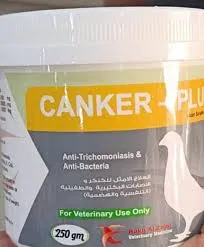
Dec . 22, 2024 18:27 Back to list
Salpingitis in Chickens Understanding Causes and Impacts on Poultry Health
Salpingitis in Hens An Overview
Salpingitis is an inflammation of the oviduct, a critical reproductive organ in hens that plays a vital role in the formation and passage of eggs. In poultry farming, particularly in countries like China where the egg production industry is significant, understanding salpingitis is essential for maintaining the health of hens and ensuring productivity.
Anatomy and Function of the Oviduct
The oviduct consists of several sections, each responsible for different stages of egg development. It starts with the infundibulum, where fertilization occurs, followed by the Magnum, Isthmus, Uterus (or Shell Gland), and Vagina. The health of the oviduct is crucial as any inflammation or blockage can lead to serious reproductive issues, including decreased egg production and poor egg quality.
Causes of Salpingitis
Salpingitis can be caused by a variety of factors. Bacterial infections, such as those from E. coli, are among the most common culprits. These bacteria can enter the oviduct during or after the process of ovulation, especially if the hen is already compromised by stress, injury, or poor environmental conditions. Other causes include viral infections, nutritional deficiencies, and the effects of certain pathogens that can disrupt hormonal balances.
Environmental stressors like overcrowding, inadequate sanitation, and extreme temperatures can exacerbate the likelihood of salpingitis. Additionally, conditions within poultry houses are pivotal; poor ventilation and high humidity can create an environment conducive to infections.
Symptoms and Diagnosis
china salpingitis in hens

Hens affected by salpingitis may exhibit a range of symptoms. Common signs include a decrease in egg production, abnormal eggs (such as those with thin shells or no eggs at all), changes in behavior, and physical signs such as swollen abdomens. In some cases, hens may also show signs of distress, which can manifest as lethargy or reduced feeding.
Diagnosis typically involves a combination of clinical observation and laboratory tests. Veterinarians may conduct examinations to assess the overall health of the hen, and in some cases, ultrasound imaging may be used to examine the oviduct more closely. Samples of feces or egg contents might be taken for microbiological analysis to identify any bacterial infections.
Treatment and Management
Addressing salpingitis effectively requires a multifaceted approach. Antibiotic therapy is commonly employed to combat bacterial infections. However, the choice of antibiotics should be carefully considered due to potential resistance issues. In cases of severe infection or complications such as peritonitis, surgical intervention may be necessary.
Prevention is equally important and involves several key strategies. Maintaining high hygiene standards in poultry environments is essential to minimize the risk of infections. This includes regular cleaning and disinfection of housing facilities, as well as proper waste management practices. Additionally, ensuring that hens are kept in optimal conditions—adequate space, ventilation, and environmental enrichment—can significantly reduce stress and promote overall health.
Nutrition plays a crucial role in preventing salpingitis. Hens require a balanced diet rich in vitamins and minerals to support their reproductive health. Supplementing with probiotics can also enhance gut health, thereby improving immunity and potentially reducing the incidence of infections.
Conclusion
Salpingitis in hens is a significant concern in poultry farming, particularly for producers aiming to maximize egg production and maintain flock health. By understanding the causes, symptoms, and management strategies associated with salpingitis, poultry farmers can take proactive steps to prevent this condition and ensure the well-being of their hens. As the demand for eggs continues to rise, the focus on poultry health will remain a priority, underscoring the importance of effective management practices in the industry.
-
Quality Bacillus Coagulans BC30 Factory - Expert Production
NewsAug.02,2025
-
China Salivation AI with GPT-4 Turbo Features
NewsAug.01,2025
-
Epic Sepsis Factories: AI-Driven Detection with GPT-4 Turbo
NewsJul.31,2025
-
Acute Salpingitis and Oophoritis AI Factory
NewsJul.31,2025
-
Premium China Bacillus Subtilis Supplier & Factory Solutions
NewsJul.30,2025
-
Premium Avermectin Supplier in China | Custom Solutions Available
NewsJul.29,2025




